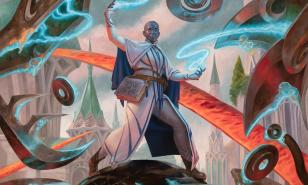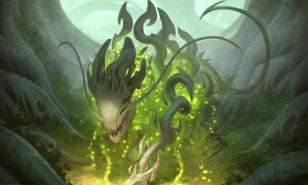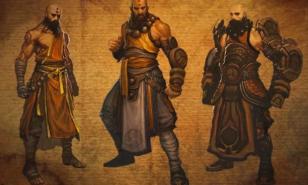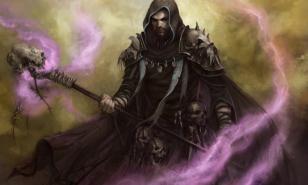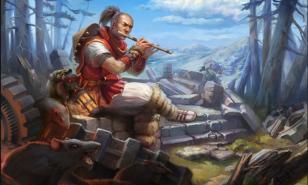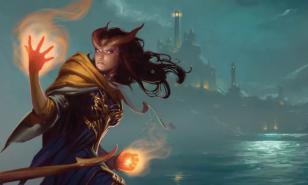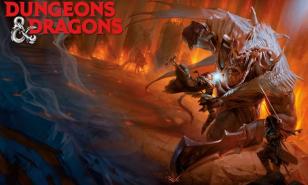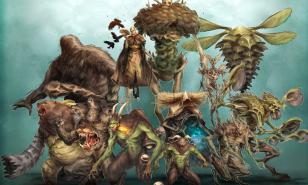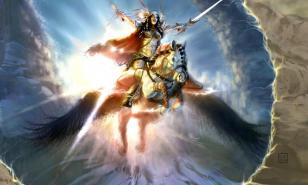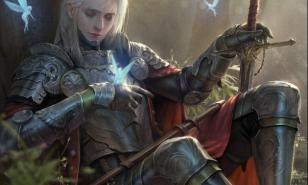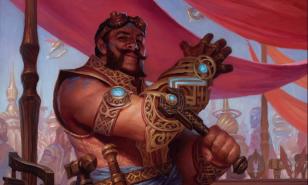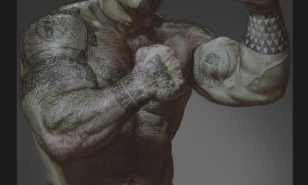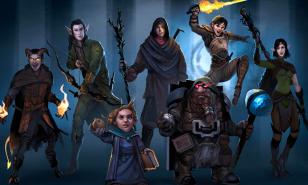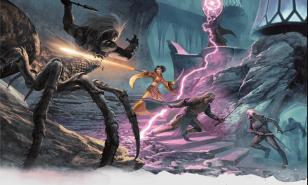[Top 5] D&D Best Tank Builds That Can Withstand Massive Damage
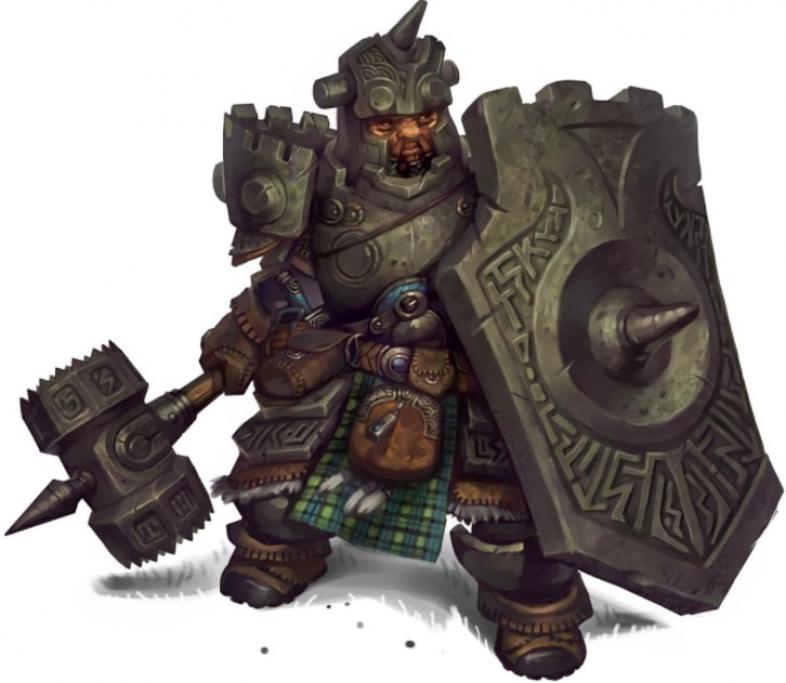
Do You Know How To Build A Tank?
There are 4 major roles in every RPG: The Tank, The Carry, The Crowd Control, and The Support.
Right now, we’ll talk about The Tank.
The Tank, as its name suggests, plays the role of being a ‘Tank’ in the team. In the military, a tank is a heavily armored vehicle that can either dish out heavy damage with its cannon or carry several men inside for safe transportation. In RPG, the Tank’s primary job is to be a frontline soldier soaking heavy damage from the enemy and secondarily preventing enemies from reaching the backline.
The Tank is usually a melee character with a focus on health, armor, and shields and they are rarely evasive. This role is really appealing to players who like playing big, muscular barbarians or heavily armored knights.
So, if you are the Tank player in the team and you’re looking for an optimal build, then you’re reading the right article.
Side Note: the builds presented here are not ranked from worst to best, they are simply presented in no particular order.
Extra Side Note: since this article is, more or less, about optimizing the best tank builds people can find within the allowed rules, characters built this way suffer from thematic expression – or the expression of showing a character concept. You have to remember that ‘optimization’ is more about ‘mathematics’ rather than ‘role-playing’. It’s more geared towards the combat aspect of DND with no or little regard for exploration or social interactions.
Last Side Note: the major weakness of these builds is that they are quite boring to play fully in a role-playing experience.
Let’s get into business!
#5 – Ultimate Barbarian Tank Build
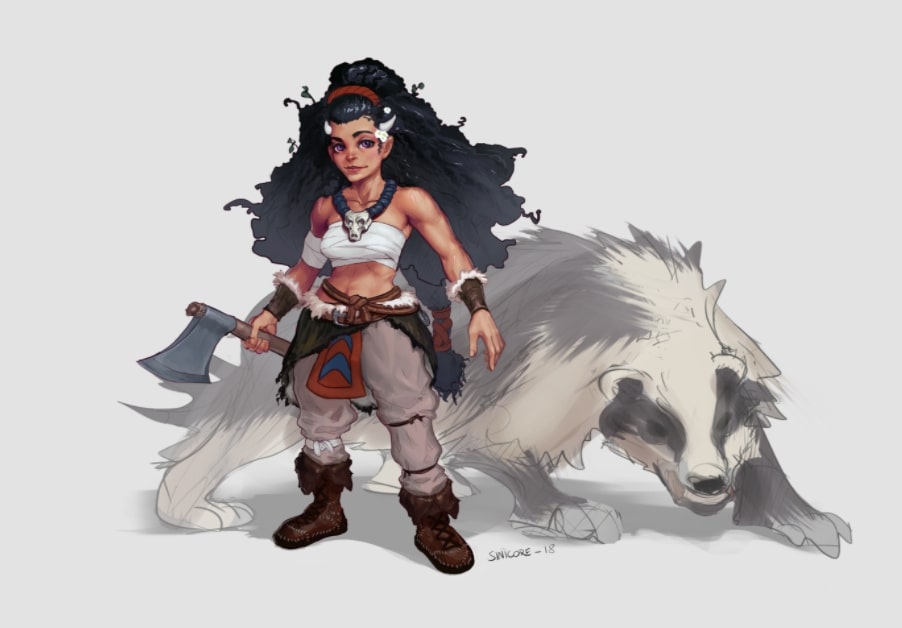
A halfling barbarian, which is, usually, not normal.
Taking20’s take on an optimized tank build is quite ‘strange’ and funny because, although it’s a Barbarian build, it uses a halfling as a racial choice. And we usually know that halflings lean towards evasion and avoidance.
With that said about the halfling, this particular tank build focuses on that strength – evasion. He de-emphasizes on the Barbarian’s Strength bonuses and capitalizes on the Stout Halfling’s bonuses to Dexterity and Constitution – two of the abilities that contribute to a Barbarian’s Armor Class. Clearly, the goal of this build is not to deal massive damage like all barbarians do but to purely play the role of the Tank.
What makes this tank build really effective is not just its maximized Dexterity and Constitution scores, but his choice to multiclass the Barbarian subclass, Path of the Ancestral Guardian, with the Fighter subclass, Cavalier.
Firstly, the Ancestral Guardian has two great tanking features: Ancestral Protectors and Spirit Shield. Ancestral Protectors summon guardian spirits around your target after your Barbarian whacks it with his axe. These spirits harass the target and impose Disadvantage on their attack rolls if they try to attack your allies. What’s sweeter is that if they persist on attacking your allies and, perchance, damage them, the ally reduces the damage by half. Secondly, your Spirit Shield feature allows you to throw out 2D6 damage-reducers as a reaction every turn. These two features alone can potentially reduce your enemy’s damage to zero while at the same time have the ability to soak damage yourself as you Rage.
But what makes this build over the top is his choice of the super powerful Sentinel feat and the Fighter subclass Cavalier. The Sentinel feat is a very solid choice if you decide to skip your Ability Score Increase during Level 4. In fact, every serious tank build should pick up the feat. What makes this feat super powerful is its ability to disrespect the Disengage action. Usually, when a creature uses Disengage, enemies surrounding that creature can’t do opportunity attacks. With Sentinel, not only does it ignore Disengage, it also fully prevents your target from leaving your side whenever you hit them with your reaction attack.
And then there’s Cavalier. The subclass features two tanking abilities very similar to the Ancestral Guardian. Unwavering Mark functions similarly to Ancestral Protectors but instead of reducing damage, the feature allows the character to make an empowered attack during his turn against the enemy that attacked your ally. And Warding Maneuver is a similar ability to Spirit Shield except that it increases Armor Class instead.
The Cavalier subclass is very redundant to the Ancestral Guardian subclass but, according to Taking20, the goal is to have a back-up crowd control ability since Ancestral Protectors can only function on one enemy at a time. Also, did I mention that you also have the Protection Fighting Style?
As the Tank yourself, despite not having the Strength score to dish out damage, you are very difficult to hit because of your maximized Dexterity and Constitution scores and with the added Armor Class froma shield. And your Rage feature effectively doubles your health pool to soak more damage (with the added benefit of the Fighter’s Second Wind).
Note: do be careful when fighting psychic damage and fighting spells that target Wisdom saving throws because it goes through your AC easily and your resistance doesn’t affect them. But, luckily, the Lucky halfling trait gives you 1 chance of rerolling a saving throw.
To summarize, what’s great about this build is that:
- It can maximize the Unarmored Defense feature of the Barbarian
- It can capitalize on the Halfling’s Lucky trait whenever you fail a saving throw
- It uses two tanking subclasses and the Sentinel feat to maximize crowd control and damage mitigation
How to build Taking20’s “Ultimate Barbarian Tank Build”
1. Choose the Stout Halfling race.
2. Be sure your important ability scores have these values: 14 str, 16 dex, 16 con.
3. Choose the Barbarian’s Path of the Ancestral Guardian subclass for your first six levels.
4. Be sure to pick up the Sentinel feat on Level 4.
5. Multiclass into Fighter with the Cavalier subclass for the next 11 levels.
#4 – The Ultimate Damage Sponge BearBarian
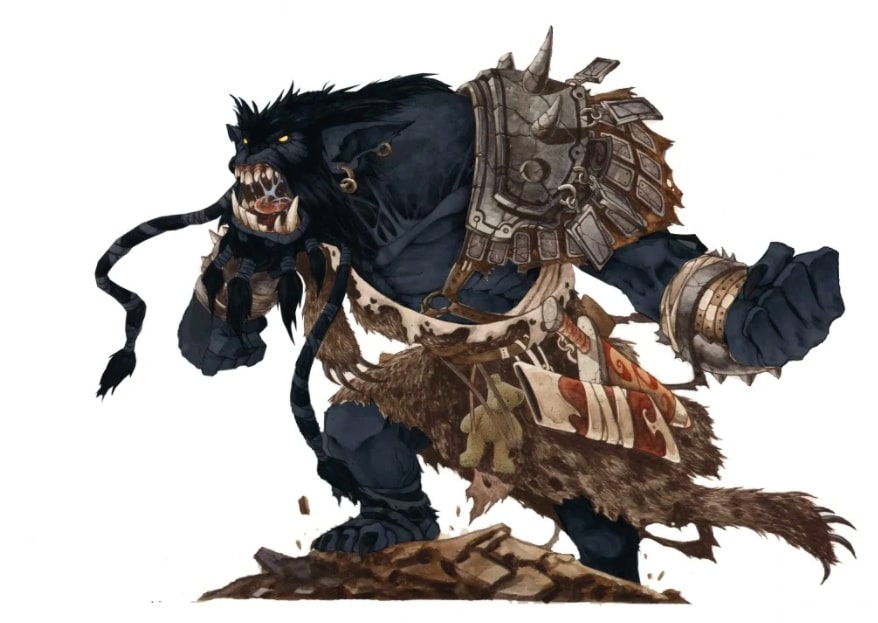
This isn't a Kalashtar???
Min/Max Munchking’s take on an optimized tank build is ‘savage’ at best. His goal is to create an absolute damage soaker who is literally resistant to all damage types. Not only that, but he also tries to abuse the free hit points the Druid’s Wild Shape feature freely gives. Again, the goal is to create the ultimate damage soak.
I think of all the builds presented here; this build is really the heart of the article’s title. You see, DND has a lot of damage types. There’s slashing damage, piercing, bludgeoning, fire, cold, lightning, and so on. And the Barbarian’s Rage feature can only resist slashing, piercing, and bludgeoning – which are the most common. But because of the Totem Warrior subclass with an emphasis on the Bear Totem, almost all damage types can be resisted – except Psychic damage. And that is where the choice of the Kalashtar race comes into play since it is one of the few races that resists psychic damage.
The beautiful thing about this build is that it has factored all the sources of attack, and that includes Saving Throws. Usually, a lot of players forget that attacks don’t just hit Armor Class, a lot of them also target Saving Throws. This build made sure that all important saving throws are covered: Dexterity, Constitution, and Wisdom. The explanation here is that it is usually understood that Constitution is the natural strong saving throw of a barbarian, and that his Danger Sense feature covers the Dexterity save through built-in Advantage. This leaves Wisdom as a weakness. And that is why the Kalashtar was chosen because, not only can it resist psychic damage, but it also has a built-in Advantage on Wisdom saves.
There’s just one weakness to this build. It’s ‘sticking’ power. A tank can’t be an effective tank if it can only soak massive damage. It must have some way of preventing enemies from reaching the backline. So, it is crucial that you must take the Sentinel feat at Level 4 for you to cover that weakness.
So, the way you play this build during combat is to activate Rage first then abuse the Wild Shape feature of the Druid since, practically speaking, after getting the Totem Warrior subclass at Level 3, you will be focusing the rest of your levels on the Druid class – with an emphasis on the Circle of the Moon subclass. As much as possible, you will only use your character’s health as a last resort whenever you run out of Wild Shape. But while you still have it, abuse it by transforming into high-health animals (since it only recharges after a short rest) and use your Sentinel feat to keep your enemies beside you.
For a list of good animals to transform into, see the best choices below:
- CR 1 – brown bear, giant hyena, giant octopus, giant spider, tiger, dire wolf.
- CR 2 – giant constrictor snake, cave bear, giant boar.
- CR 3 – giant scorpion, giant snapping turtle, ankylosaurus.
- CR 4 – giant subterranean lizard, giant coral snake, elephant.
- CR 5 – giant crocodile, hulking crab, brontosaurus.
To summarize, what’s great about this build is that:
- It can literally withstand ALL sources of damage
- It can abuse its Wild Shape beast forms by using them as health buffers
- You can achieve sticking power through the Sentinel feat
How to build Min/Max Munchking’s “The Ultimate Damage Sponge BearBearian”
1. Choose the Kalashtar race.
2. Be sure your ability scores focus on Dexterity and Constitution since you won’t be needing your Strength score since you mostly fight in Wild Shape.
3. Choose the Barbarian’s Path of the Totem Warrior subclass for your first three levels.
4. Be sure to pick up the Sentinel feat on Level 4.
5. Multiclass into Druid and choose the Circle of the Moon for the rest of your levels to play strong combat beasts.
#3 – The Paladin Tank
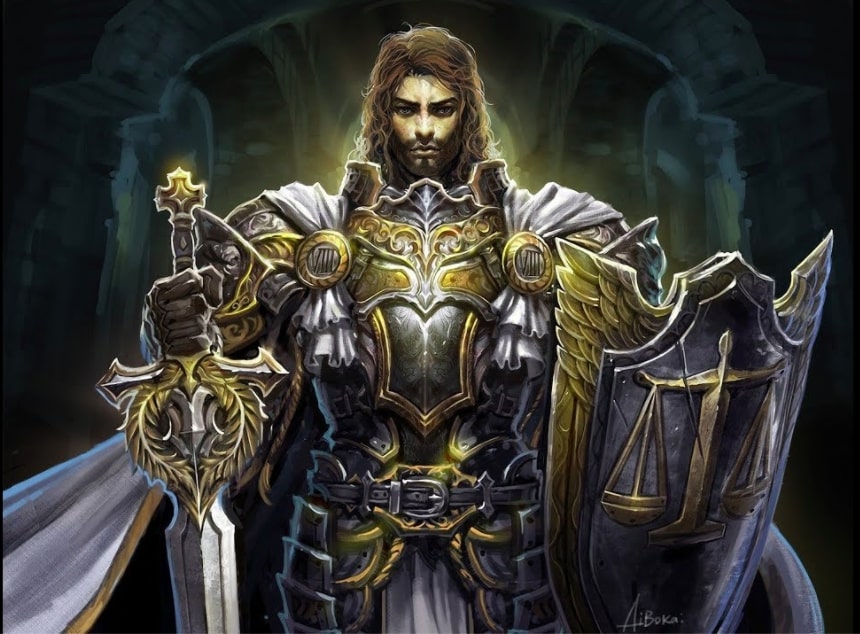
I AM THEE PROTECTOR!
If there’s a DND class that symbolizes the Tank in all its metallic glory, then it’s none other than the Paladin. The class is the most perfect fit for the Tank role because, story-wise, Paladin’s are usually depicted as holy knights who promise to protect the weak and innocent. In this build, D&D Deep Dive optimizes the knight in shining armor by making it near impenetrable and at the same time controlling the enemies to never leave his side.
With a whopping potential Armor Class of 27, a smart Dungeon Master will stop trying to hit this brick wall and go after the Paladin’s allies instead. But since this Paladin has features and spells that forcibly draw the enemies’ attention, your Dungeon Master will have a very frustrating time defeating your party. The only challenge here is to find a wayto reduce your enemies’ way of resisting your crowd control (either by boosting your spell DC or imposing Disadvantage on their saving throws) or you will lose your sticking power (knowing that you won’t have the Sentinel feat in this build).
Since you don’t have the Barbarian’s Rage feature (which reduces the damage you take by half), your goal here is to pump up your Armor Class as much as possible. You can achieve this by equipping a plate armor and a shield early on to get a base AC of 20. Then, as you progress, you take the Defense Fighting Style to boost your AC by +1 (21 AC) and then activate the spell Shield of Faith for the rest of combat to boost your AC by another +2 (23 AC). Then after you get your Extra Attack feature at Level 5, you multiclass into one level of Sorcerer at Level 6 and choose its Divine Soul subclass. The intention here is to take the Sorcerer’s Shield spell to further boost your AC by +4 (27 AC) in cases of an emergency. The Divine Soul feature which lets you roll a 2d4 if you fail a saving throw or an attack roll is just icing on the cake.
As the player of this build, you must remember that you are playing a Paladin. Not only are you a Tank, but you’re also a walking Hospital. Although it’s a lot of responsibility (especially when you don’t have a party healer), your other job is to project healing and protecting auras for your allies to benefit, like the Aura of Vitality which can heal allies within the aura for 2d6 worth of damage or your Channel Divinity: Turn the Tide which functions similarly.
Do take note that your weakness here is your sticking power. Since you won’t have the Sentinel feat in this build (unless you exchange one of the suggested feats into it), you are only limited by your spell slots and your Channel Divinity feature uses when you cast your two important crowd control spells: Compelled Duel and Champion Challenge. And the other weakness of your weakness is the fact that your spells can be easily resisted if your enemy has either good Wisdom saving throws or a natural Advantage to Wisdom saving throws. So, you can choose to forgo the Heavy Armor Master feat you get as a Human Variant and choose the Sentinel feat instead (but be sure to weigh out the consequences).
To summarize, what’s great about this build is that:
- It can be very frustrating for your DM to even try to hit you
- You’re not only a Tank but also an important source of healing and buffs
- You have a very good amount of health to soak damage as well
How to build D&D Deep Dive’s “The Paladin Tank”
1. Choose the Human Variant race and pick the Heavy Armor Master feat.
2. Be sure your ability scores maximize Strength, Constitution, and Charisma since these are your core abilities to properly function as a tank.
3. Choose the Paladin’s Oath of the Crown subclass since it is the only subclass that can effectively compel a lot of enemies to fight you.
4. Be sure to pump up your Constitution score and max it each time you earn an Ability Score Increase.
5. Multiclass into one level of Sorcerer by Level 6 and prioritize getting the Shield spell. And choose the Divine Soul subclass for its bonus features to saving throws.
#2 – The Most Annoying and Powerful Paladin Character Build Ever
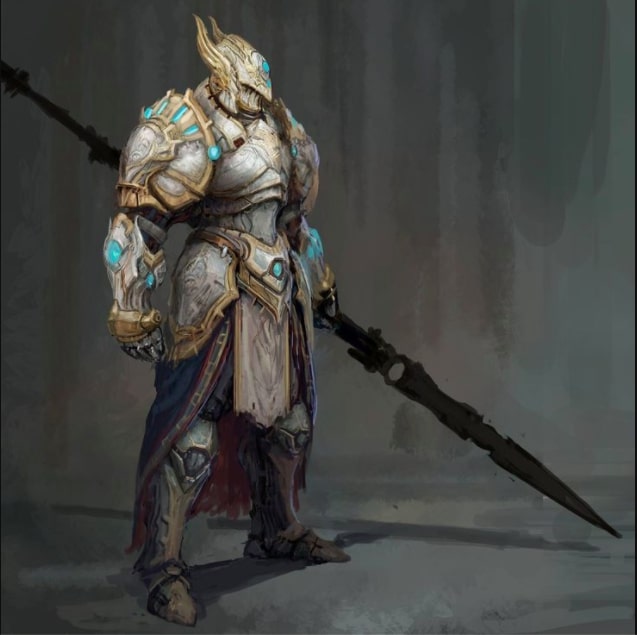
This one's some badass lancer
True to its title, this Paladin build’s gameplay focuses on harassing its target until it bleeds out and with a bonus that you’re a tank.
The beauty about this tank build is its straightforward in-your-face combat style. There’s no multiclassing needed. You just need three core features: Polearm Master feat, Sentinel feat, and Relentless Avenger paladin feature.
The weakness of this build compared to that of a purely tank paladin is that you can’t pump up your AC beyond 20 since you’ll be using both of your hands to wield a polearm and not a shield. So, you need some kind of concentration spell that buffs up your AC like Shield of Faith or Haste. But the problem with this approach is that using those spells eats up space for your spells that boost your damaging capability like Hunter’s Mark or Divine Smite. So, I think the solution here is to rely on an ally who can boost your AC (like a cleric or a bard) so that you can use your spell slots to boost your killing potential because the strength of this build comes from abusing the reach of your polearm and locking your enemies within your threat range with Sentinel and by harassing them with your Vow of Enmity and Relentless Avenger paladin features.
Note: do remember that you’re a Paladin. You have spells and features that heal and block damage. Use that to increase your survivability as a tank.
To summarize, what’s great about this build is that:
- It’s a very straightforward tank build that harasseses enemies
- You don’t need to multiclass
- You capitalize on your increased range with Polearm Master and Sentinel
How to build How to DND’s “The Most Annoying and Powerful Paladin”
1. Choose the Human Variant race and pick the Polearm Master feat.
2. Be sure your ability scores maximize Strength, Constitution, and Charisma since these are your core abilities to properly function as a tank.
3. Choose the Paladin’s Oath of Vengeance subclass since it provides a way for you to stay beside the target you’re harassing.
4. Get the Sentinel feat at Level 4 to maximize your polearm.
#1 – The Abjuration Wizard Tank
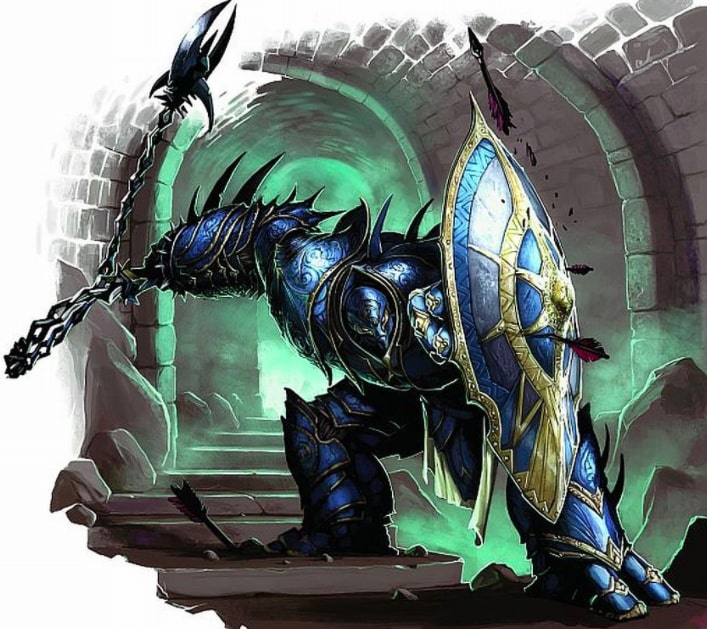
You never thought you'd see a Wizard playing as a tank, huh?
Wizards are usually squishy backline members who provide firepower and crowd control to the team. Their major weakness is a single stab with a dagger due to their very low health pool. But here’s one very special build that transforms the wizard into an artillery tank.
By starting as an Artificer, D&D Deep Dive’s Wizard Tank can immediately start the game with medium armor. But not only that, by taking the Armorer subclass this build can now cheat its way to heavy armor without the need for Strength. Plus, it can use its main ability, Intelligence, to be effective in melee combat. And since you won’t be staying as an Artificer but multiclass into an Abjuration Wizard, you’re not only a tank but an artillery tank.
Although this build looks very fun to play, it is actually very meticulous to build. You must be very careful and precise when choosing your features because you have to remember that your health pool is still that of a wizard. One such choice is your choice of the Warforged race. The race not only gives you a passive +1 to AC, but it also has advantage and resistance against poison and immunity to disease. Then when you learn the Artificer’s Infusion feature, be sure to augment your shield with Enhanced Armor instead of your armor so that when you take the Shield Master feat, the bonus to your shield greatly adds to your feat.
Then when multiclassing into Wizard at Level 4, prioritize the cantrip Booming Blade because it synergizes well with your Armorer’s Thunder Gauntlets (the synergy alone strongly locks your target in front of you and places them into a lose-lose situation should they decide to move away from you). Then don’t forget to always prepare the Shield spell for emergency use.
Now, from here it becomes more advanced.
Your goal is to take the Abjuration subclass of the wizard for its Arcane Ward feature which gives you an extra layer of health. And the best thing about it is that it’s not considered a Temporary Hit Points so that means you can use spells that give Temporary Hit Points such as False Life to further prolong your Arcane Ward’s duration. And speaking of temporary hit points, your next goal is to multiclass into a single level of Warlock for the sole reason for picking up the spell, Armor of Agathys. The beauty about Agathys is that it GREATLY synergizes with your Arcane Ward since Arcane Ward absorbs damage first before Armor of Agathys. This way, you can capitalize on the automatic damage Armor of Agathys does to your enemies whenever they hit you in melee.
As you level up further, your goal is to choose spells that greatly augments your tanking power by controlling the flow of battle. Spells such as Haste, Blur, Mirror Image, Banishment, or Polymorph are great additions to your arsenal. And speaking of arsenal, remember to pick up Fireball or Lightning Bolt so that you can wreak havoc as a wizard. From there, pick up Heavy Armor Master feat and Toughness feat to increase your survivability further.
Note on playing an Abjurer: remember that your Arcane Ward can only activate and be replenished whenever you cast Abjuration spells. So be sure to select Abjuration spells like Alarm which you can abuse for free to recharge your ward outside of combat by using it as a ritual.
To summarize, what’s great about this build is that:
- It’s not only a tank but it’s also a long-range artillery tank
- You have the wizard’s spell list to control the battlefield
- It’s a darn cool concept
How to build D&D Deep Dive’s “The Abjuration Wizard Tank”
1. Choose the Warforged race for maximum survivability.
2. Be sure to pump up Constitution asides from your Intelligence score since you’re playing the tank role. And an average Charisma score since you’ll be multiclassing into Warlock.
3. Start the game with Artificer and get to Level 3 to pick up the Armorer subclass.
4. Multiclass into a Wizard and pick up the Abjuration subclass.
5. Multiclass into a single level of Warlock and pick up the Armor of Agathys spell since this spell together with Arcane Ward forms the core of your tank build.
6. Remember to choose Abjuration spells along the way to activate your Arcane Ward.
7. Remember to either get a Fireball or Lightning Bolt spell for you to deal massive artillery damage.
8. Remember to choose crowd control spells too like Web, Grease, or Warding Wind.
Alright!
Those are the Top 5 optimized tank builds that can withstand massive damage!
One final note: always, and, I mean, always, bring a lot of healing potions, especially when the party cleric decides not to heal.
If you enjoyed reading this article, I think you’ll also enjoy these reads below:
- Top 10 Most OP DnD Builds (OP D&D Class Builds)
- [Top 5] D&D Best Paladin Subclass
- [Top 5] D&D Best Barbarian Builds That Are OP
You may also be interested in:
- The Best D&D Classes (Ranked from Worst to Best)
- Top 25 Best D&D Villains of All Time
- 32 Most Interesting Facts About Dungeons and Dragons!
- 25 Best D&D Games for PC That Every Fan Must Play!
- The 10 Best DnD Streams
- Most Powerful D&D Dragons For Adventurers To Defeat
- Top 10 Best DnD Campaign Ideas
- Top 5 DnD Most Useful Languages
- D&D Top 10 Most Damaging Spells That Obliterate Foes
- Top 15 Most Powerful D&D Spells
- The Best D&D Race for Every Class
- Top 10 D&D Best Quests That Are Amazing
- Top 10 D&D Best Utility Spells
- [Top 10] D&D Best Zombies
- [Top 10] D&D Best Simple Weapons For Killing Foes
- [Top 10] D&D Best YouTube Channels
- [Top 5] D&D Best Tank Builds That Can Withstand Massive Damage
Image Gallery
- Log in or register to post comments
 Home
Home PC Game Trailers
PC Game Trailers News
News Menu
Menu








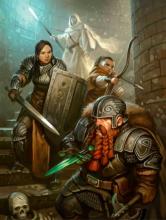

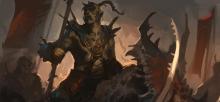
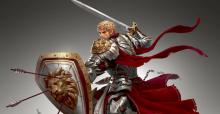

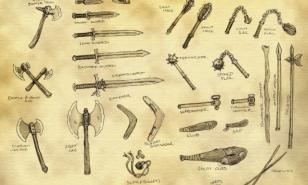
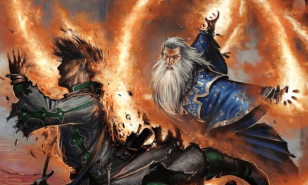


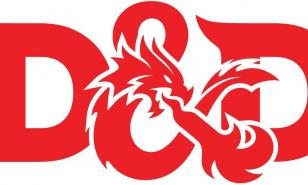
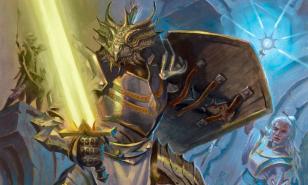
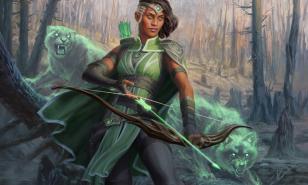

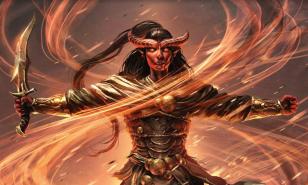
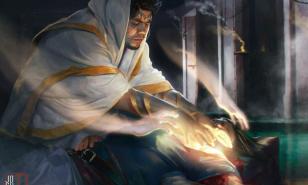
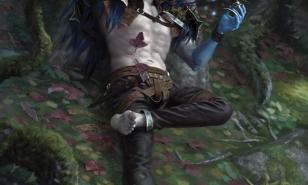
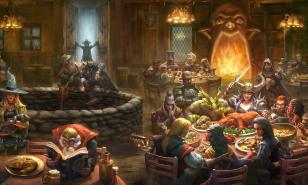
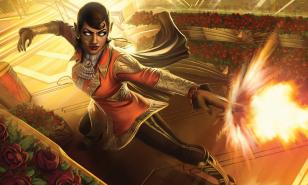
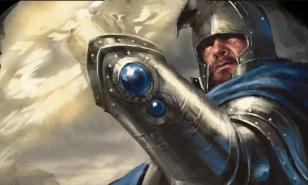


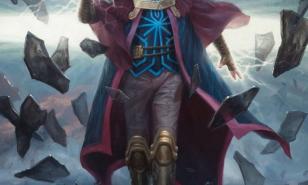


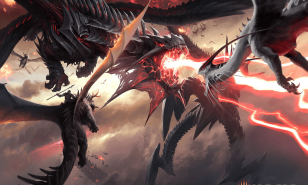
![[Top 5] D&D Best Monk Builds That Are Excellent](https://www.gamersdecide.com/sites/default/files/styles/308x185-scale-crop--more-top-stories/public/screen_shot_2022-02-16_at_3.13.03_am.jpg)
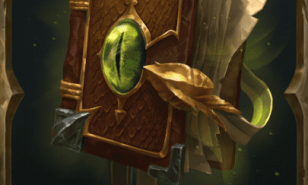

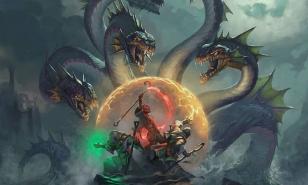
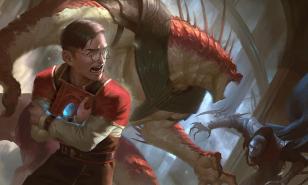
![[Top 10] D&D Best Party Compositions That Are Great a group of adventurers towering valiantly upon a cliff.](https://www.gamersdecide.com/sites/default/files/styles/308x185-scale-crop--more-top-stories/public/screenhunter_02_6.jpg)
![[Top 3] D&D Best Monk Subclasses To Play](https://www.gamersdecide.com/sites/default/files/styles/308x185-scale-crop--more-top-stories/public/screen_shot_2022-02-11_at_12.25.31_am.jpg)
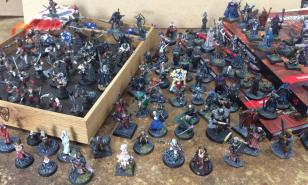

![[Top 10] D&D Best Barbarian Feats Revealed](https://www.gamersdecide.com/sites/default/files/styles/308x185-scale-crop--more-top-stories/public/screen_shot_2022-02-17_at_12.17.13_am.jpg)
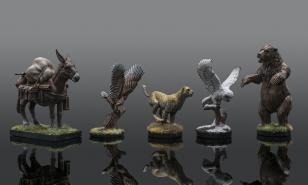
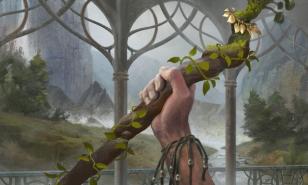
![[Top 10] D&D Best Monk Feats Revealed](https://www.gamersdecide.com/sites/default/files/styles/308x185-scale-crop--more-top-stories/public/screen_shot_2022-02-16_at_4.01.15_am.jpg)
